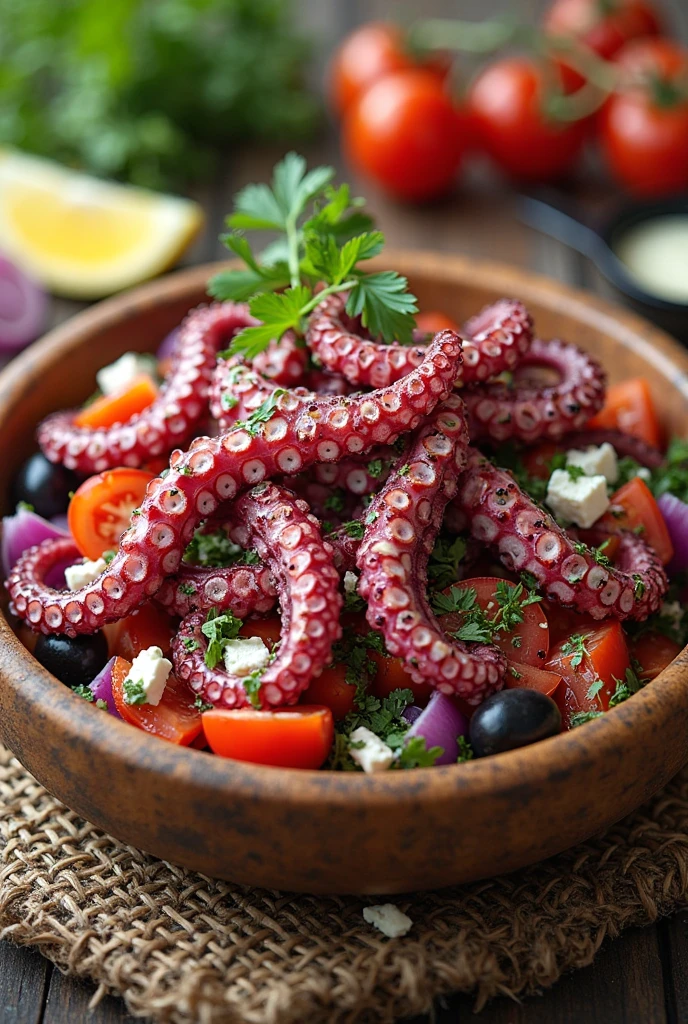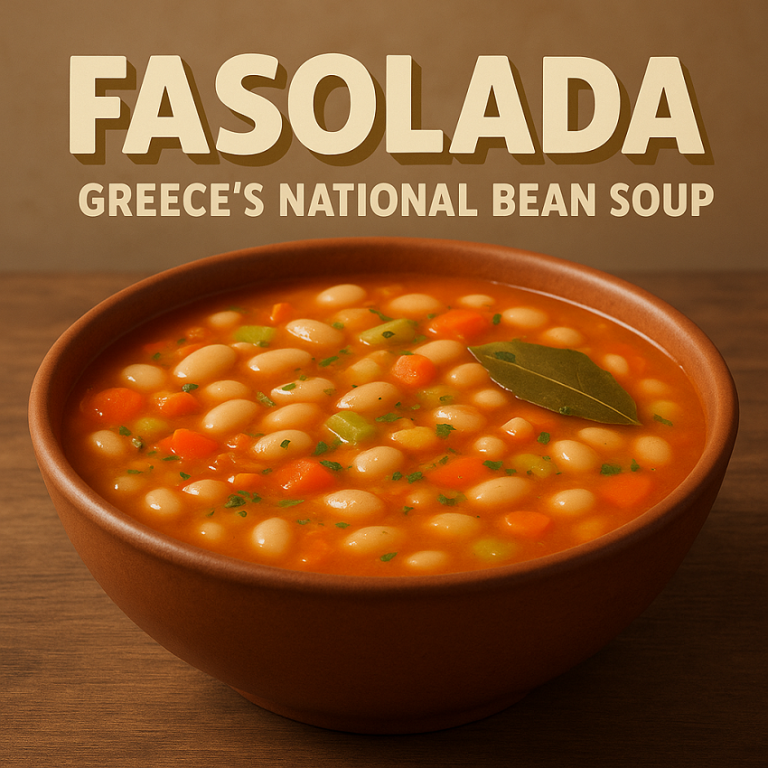
Greek octopus salad is a delightful seafood dish that beautifully captures the essence of Mediterranean cuisine. This salad combines tender octopus with fresh vegetables, herbs, and a zesty dressing, making it a perfect appetizer or light main course. Its unique flavors and textures evoke the sunny shores of Greece, making it a favorite in coastal towns. Let’s explore the ingredients, preparation, nutritional benefits, and variations of this delicious dish.
Ingredients
To prepare a traditional Greek octopus salad, you’ll need the following ingredients:
- Fresh or Frozen Octopus: 1 pound (cleaned)
- Olive Oil: 3-4 tablespoons
- Lemon Juice: from 1-2 lemons
- Garlic: 2 cloves, minced
- Red Onion: 1 small, thinly sliced
- Cherry Tomatoes: 1 cup, halved
- Cucumber: 1 medium, diced
- Fresh Parsley: 1/4 cup, chopped
- Capers: 2 tablespoons, rinsed (optional)
- Salt and Pepper: to taste
- Oregano: 1 teaspoon, dried or fresh
- Paprika or Chili Flakes: for extra flavor (optional)
Optional Ingredients
- Feta Cheese: Crumbled, for a salty kick.
- Olives: Kalamata olives for added brininess.
- Mixed Greens: For a fresh base.
Preparation
Step 1: Cook the Octopus
- Boil Water: Bring a large pot of salted water to a boil.
- Cook the Octopus: Add the cleaned octopus and cook for about 30-40 minutes until tender. If using frozen octopus, follow the package instructions.
- Cool and Slice: Once cooked, remove the octopus, let it cool, and slice it into bite-sized pieces.
Step 2: Prepare the Vegetables
While the octopus cools, prepare the vegetables:
- Red Onion: Thinly slice.
- Cherry Tomatoes: Halve.
- Cucumber: Dice into small cubes.
- Parsley: Chop finely.
Step 3: Make the Dressing
In a small bowl, whisk together the olive oil, lemon juice, minced garlic, oregano, salt, and pepper. You can also add paprika or chili flakes for extra flavor.
Step 4: Combine Ingredients
In a large mixing bowl, combine the sliced octopus, prepared vegetables, and capers. Drizzle the dressing over the salad and toss gently to ensure everything is well coated.
Step 5: Chill and Serve
For best results, let the salad sit in the refrigerator for at least 30 minutes before serving. This allows the flavors to meld beautifully. Serve chilled, garnished with extra parsley or lemon wedges if desired.
Nutritional Benefits
Greek octopus salad is not only delicious but also offers several health benefits:
- High in Protein: Octopus is an excellent source of lean protein, essential for muscle growth and repair.
- Low in Calories: This dish is low in calories, making it a great option for those watching their weight.
- Rich in Omega-3 Fatty Acids: These healthy fats support heart health and reduce inflammation.
- Vitamins and Minerals: Octopus is rich in vitamins B12, A, and E, as well as minerals like iron, zinc, and selenium.
Variations
Feel free to customize your Greek octopus salad with these variations:
- Mediterranean Twist: Add olives, feta cheese, or roasted red peppers for extra flavor.
- Spicy Kick: Incorporate diced jalapeños or chili paste for heat.
- Herb Variations: Experiment with fresh herbs like dill or mint for a different flavor profile.
- Additional Greens: Serve the salad over mixed greens or spinach for added nutrition.
Serving Suggestions
Greek octopus salad can be enjoyed in various ways:
- As an Appetizer: Serve small portions as a starter for a seafood feast.
- As a Main Dish: Pair it with crusty bread or rice for a light meal.
- In Pita Bread: Use the salad as a filling for whole-grain pita bread.
- On a Bed of Greens: Serve it over a fresh salad for added volume and nutrition.
Conclusion
Greek octopus salad is a vibrant and flavorful dish that perfectly captures the essence of the Mediterranean. Its fresh ingredients and zesty dressing make it a delightful choice for any occasion. Whether you’re enjoying it as an appetizer or a light main course, this salad is sure to impress seafood lovers and newcomers alike. Try making it today and savor the delightful flavors of this exquisite Greek dish



